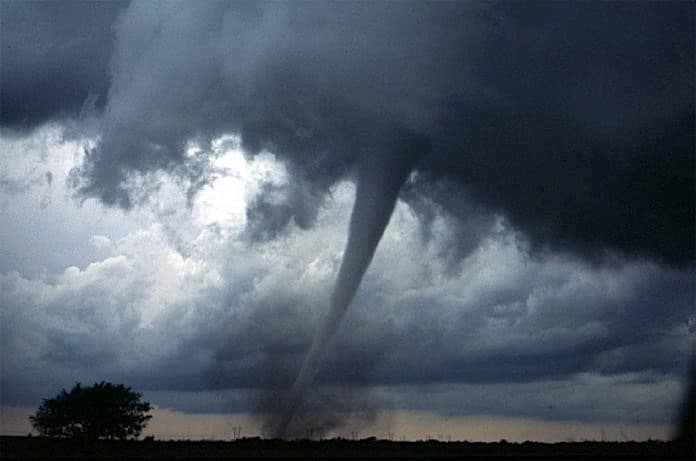March 2, 2012 quickly became a more hectic day than usual for Henryville, Indiana school bus driver Angel Perry. Two super-cells, thunderstorms with rotation and a prolonged updraft, bore down on the town located 20 miles north of Louisville, Ky. One of the storms had a history of tornadoes.
The forecast called for the leading storm to hit Henryville at 3:15 p.m., the scheduled dismissal time for Henryville Junior and Senior High School as well as Henryville Elementary. One building housed these two schools. Knowing school buses stood little chance in a tornado, school officials decided to dismiss early, at 2:45 p.m.
While halfway through her route, radio traffic showed a tornado approaching. Angel returned to the school with 11 of her remaining students. After pulling into the school parking lot, she counted off the students as they disembarked. They were safe inside the school building when the tornado struck. All the students survived.
School bus drivers do not make policy decisions. They do what they’re told and get their children to and from school safely. That may sometimes place them on the road and in harm’s way. What follows is information that may help drivers facing a storm on the road.
Prepare
A famous quote by Benjamin Franklin goes, “An ounce of prevention is worth a pound of cure.” This certainly applies to tornado preparation. Several of Perry’s colleagues sheltered their students in-house basements along their routes. Perry considered doing that, but she had no idea who might be home, and checking would have taken precious time.
- Know your route. A good driver knows their route. A great driver knows their students, their parents and who is home during the day. This information identified homes that can be shelters. Another idea is to locate churches and businesses with the capabilities of housing the students.
- Know the terrain. Drivers should familiarize themselves with the physical terrain along their route. As a last resort, drivers should look for flat terrain far from trees, power lines, light poles and other falling hazards. Drivers must avoid overpasses. An overpass magnifies the wind’s strength as it funnels underneath. Drivers should be wary of sheltering in ditches as they may quickly fill with rainwater.
- Know what to do. The transportation department should have emergency plans developed, and drivers must be familiar with them. The plans should include general steps for the driver.
- Get it in writing. After the driver identifies potential shelters in homes and/or businesses, they should obtain permission in writing from owners to use them in the event of an emergency.
Respond
A local news station posted a link to Angel’s radio chatter. Throughout the incident she remained very calm. This is key to an effective response. The children on the bus will be scared. The driver’s reaction is a model for their behavior. As the children left the bus, Angel counted them off to make sure everyone got off.
- Keep the voice controlled. When people feel threatened, they get louder. This is OK as long as the voice remains controlled. In extreme stress, the human body may experience a loss in hearing. If children hear the driver in control, they will feel that the driver is in control.
- Keep movements controlled. The driver acting in a controlled manner will help the children behave in a controlled manner. They will be scared and upset, but if they behave in a controlled manner, there is a greater chance for survival.
- Maintain accountability. Drivers should always have an idea of how many children they have on board. When the children are getting off the bus, drivers should always verbally count them off, just as Angel did—regardless if it’s an emergency situation or a normal route. This action helps ensure that no student is left behind. If shelter is taken in a home or a business, the driver is still in charge of the children.
Recover
A tornado leaves a lasting impact. The transportation director should arrange with local public safety agencies to provide Critical Incident Stress Management (CISM) services to all fleet employees. This “psychological first aid” can assist drivers to cope with the stresses of a traumatic incident.
Drivers should take care of themselves. They should eat well, get plenty of rest, drink plenty of water, and avoid alcohol and drugs.
Angel Perry did everything right on that fateful day. She was calm and controlled and maintained accountability of her kids. Just moments after she got her kids to safety, the tornado picked up her 33,000-pound school bus and threw it 300 yards down a hill into a diner. It is easy to imagine the tragic outcome had children still been on the bus.
Benjamin Franklin would have made a great transportation director.
 Stephen Satterly is a transportation director and a school safety researcher based in Indiana. He is a co-author of Staying Alive: How to Act Fast and Survive Deadly Encounters.
Stephen Satterly is a transportation director and a school safety researcher based in Indiana. He is a co-author of Staying Alive: How to Act Fast and Survive Deadly Encounters.

















